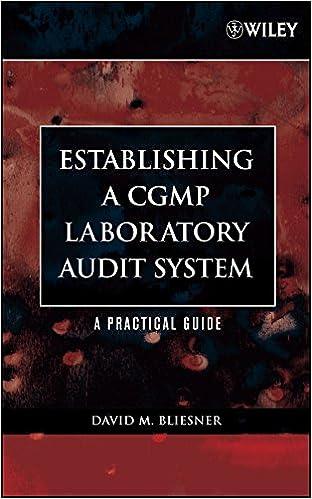Answered step by step
Verified Expert Solution
Question
1 Approved Answer
Audit Procedures for Quality Control in Auditing Firms: Quality control in auditing firms is essential to ensure that audit engagements are performed with the highest
Audit Procedures for Quality Control in Auditing Firms:
Quality control in auditing firms is essential to ensure that audit engagements are performed with the highest level of professionalism, integrity, and accuracy. Audit procedures for quality control encompass various measures implemented by auditing firms to maintain and enhance the quality of their audit services. Here are some key aspects of audit procedures for quality control:
Quality Control Policies and Procedures: Auditing firms establish comprehensive quality control policies and procedures that outline the firm's commitment to maintaining audit quality. These policies cover areas such as independence, ethical standards, professional competence, supervision, and review of audit work.
Risk Assessment: Auditing firms conduct risk assessments to identify potential risks and threats to audit quality. This involves evaluating factors such as client characteristics, industry risks, inherent risk factors, and complexity of transactions. By understanding the risks associated with each audit engagement, firms can develop appropriate strategies to mitigate those risks and ensure audit quality.
Training and Development: Auditing firms invest in training and development programs to enhance the skills and competencies of their audit professionals. These programs cover technical knowledge, professional standards, auditing methodologies, emerging trends, and regulatory updates. By providing ongoing training and development opportunities, firms ensure that their auditors remain uptodate and capable of delivering highquality audit services.
Engagement Quality Reviews: Auditing firms perform engagement quality reviews EQRs to evaluate the overall quality of audit engagements. EQRs are independent assessments conducted by senior personnel who were not involved in the audit engagement. These reviews assess compliance with auditing standards, adequacy of documentation, sufficiency of evidence, and overall adherence to quality control policies and procedures.
Monitoring and Review: Auditing firms continuously monitor and review their quality control processes to identify areas for improvement. This may involve internal inspections, peer reviews, client feedback, and regulatory inspections. By conducting regular reviews and assessments, firms can identify weaknesses in their quality control systems and take corrective actions to address them.
Fill in the Blank Question:
Auditing firms conduct assessments to identify potential risks and threats to audit quality.
A financial
B independence
C risk
D client

Step by Step Solution
There are 3 Steps involved in it
Step: 1

Get Instant Access to Expert-Tailored Solutions
See step-by-step solutions with expert insights and AI powered tools for academic success
Step: 2

Step: 3

Ace Your Homework with AI
Get the answers you need in no time with our AI-driven, step-by-step assistance
Get Started


